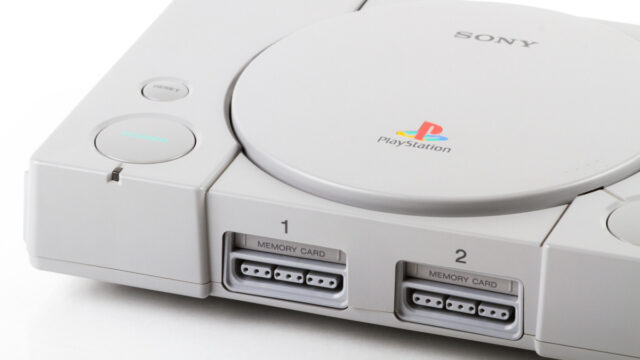New "nsOne" board can save a dying 1990s PlayStation 1 by transplanting original chips.
Last week, electronics engineer Lorentio Brodescoannouncedthe completion of a mock-up fornsOne, reportedly the first custom PlayStation 1 motherboard created outside of Sony in the console's 30-year history. The fully functional board accepts original PlayStation 1 chips and fits directly into the original console case, marking a milestone in reverse-engineering for the classic console released in 1994.
Brodesco's motherboard isn't an emulator or FPGA-based re-creation—it's a genuine circuit board designed to work with authentic PlayStation 1 components, including the CPU, GPU, SPU, RAM, oscillators, and voltage regulators. The board represents over a year ofreverse-engineering workthat began in March 2024 when Brodesco discovered incomplete documentation while repairing a PlayStation 1.
"This isn't an emulator. It's not an FPGA. It's not a modern replica," Brodesco wrote in a Reddit post about the project. "It's a real motherboard, compatible with the original PS1 chips."
It's a desirable project for some PS1 enthusiasts because a custom motherboard could allow owners of broken consoles to revive their systems by transplanting original chips from damaged boards onto new, functional ones. With original PS1 motherboards becoming increasingly prone to failure after three decades, replacement boards could extend the lifespan of these classic consoles without resorting to emulation.
The nsOne project—short for "Not Sony's One"—uses a hybrid design based on thePU-23series motherboards found in SCPH-900X PlayStation models but reintroduces the parallel port that Sony had removed from later revisions. Brodesco upgraded the original two-layer PCB design to a four-layer board while maintaining the same form factor.
The project has attracted attention from retro gaming communities and tech outlets, with coverage fromHackaday,TimeExtension, and other publications when it was first announced. AKickstarter campaignto fund prototype production and testing has raised 5,774 euros (about $6,684)from 65 backers as of June 5, 2025.
The nsOne project joins a growing community of homebrew PlayStation 1 hardware developments. Other recent projects includePicostation, a Raspberry Pi Pico-based optical disc emulator (ODE) that allows PlayStation 1 consoles to load games from SD cards instead of physical discs. Other ODEs likeMODEandPSIOhave also become popular solutions for retrogaming collectors who play games on original hardware as optical drives age and fail.
To understand the classic console's physical architecture, Brodesco physically sanded down an original motherboard to expose its internal layers, then cross-referenced the exposed traces with component datasheets and service manuals.
"I realized that detailed documentation on the original motherboard was either incomplete or entirely unavailable," Brodesco explained in his Kickstarter campaign. This discovery launched what would become a comprehensive documentation effort, including tracing every connection on the board and creating multi-layer graphic representations of the circuitry.
Using optical scanning and manual net-by-net reverse-engineering, Brodesco recreated the PlayStation 1's schematic in modern PCB design software. This process involved creating component symbols with accurate pin mappings and identifying—or in some cases creating—the correct footprints for each proprietary component that Sony had never publicly documented.
Brodesco also identified what he calls the "minimum architecture" required to boot the console without BIOS modifications, streamlining the design process while maintaining full compatibility.
The mock-up board shown in photos validates the footprints of chips and connectors, all redrawn from scratch. According to Brodesco, a fully routed version with complete multilayer routing and final layout is already in development.
As Brodesco noted on Kickstarter, his project's goal is to "create comprehensive documentation, design files, and production-ready blueprints for manufacturing fully functional motherboards."
Beyond repairs, the documentation and design files Brodesco is creating would preserve the PlayStation 1's hardware architecture for future generations: "It's a tribute to the PS1, to retro hardware, and to the belief that one person really can build the impossible."














